by Greg Cada
Gardenopolis editors recently heard Greg speak on this subject at Holden Arboretum, and asked him to share his expertise with our readers.
Shortly after Thomas Jefferson’s 1801-09 presidency during which, much like today, the mud of slander and volatile allegations was slung by both parties, our third president wrote to the mâitre d’hôtel of the President’s (now, White) House: “I am constantly in my garden or farm, as exclusively employed out of doors as I was within doors when at Washington, and I find myself infinitely happier in my new mode of life.” Jefferson’s love of architecture and landscape design was a side of his life which also left a footprint on America. We will briefly look at the influences and products of this aspect of his life.
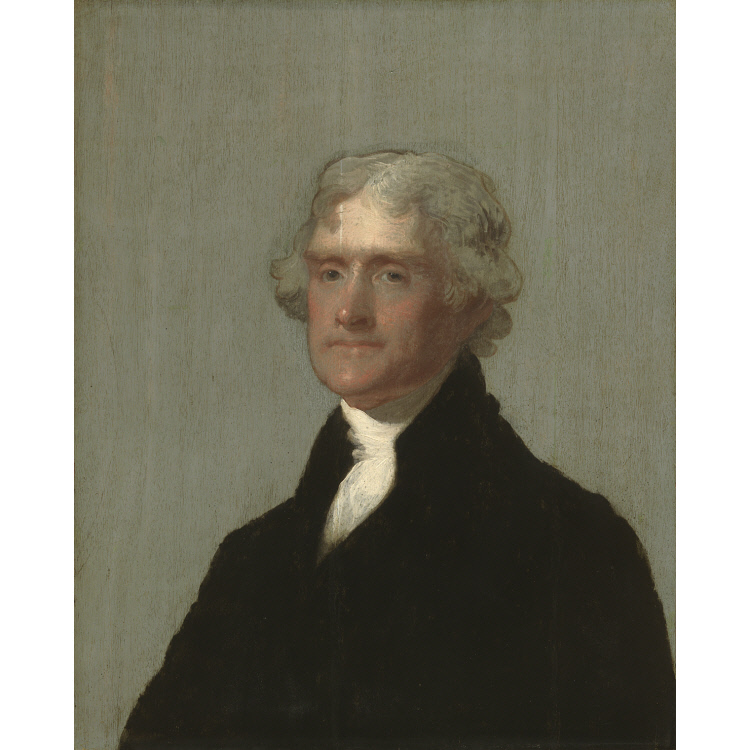
Jefferson was born on April 13, 1743 at Shadwell, near Charlottesville, Virginia, in the backwoods of Virginia to Peter and Mary Jefferson, respectively, a prominent surveyor and a Randolph. The Randolphs were probably the preeminent family in Virginia, which provided Jefferson easy entrée to the better homes, many of which had elaborate gardens as the Colonial aristocracy favored ornate gardens to impress the populace by demonstrating their control over nature in the rugged New World. Meanwhile, in England, where the land had long since been denuded, the trend had evolved toward restoration of natural, picturesque gardens. The wealthy moved untold amounts of soil and rerouted bodies of water to make the land look natural.
From 1745-52, the Jefferson family relocated to Tuckahoe Plantation near Richmond on the James River, where Peter Jefferson acted as guardian of his best friend’s son after the friend died. The Tuckahoe manor had been expanded 1734 such that from the air its footprint looks like an “H.” This may help to explain Jefferson’s like of buildings with perpendicular extensions like shoulders and arms.
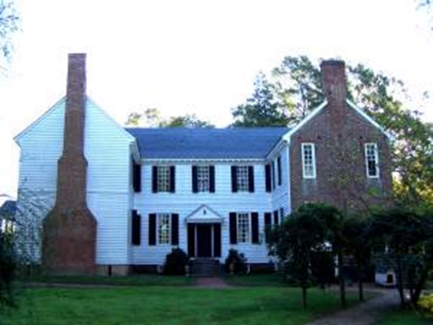
Jefferson attended the College of William and Mary in Williamsburg from 1760-62, and then read law with George Wythe, a prominent attorney and jurist. His stay in Williamsburg and association with the Royal Governor afforded him exposure to the gardens in Williamsburg, then the wealthiest capital in Colonial America.
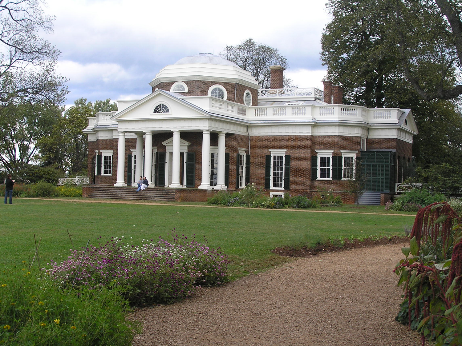
Construction of Monticello began in 1768. The manor was central to terraces which formed shoulders and arms ending at pavilions. A large west lawn was surrounded by a serpentine flower walk, with oval gardens at the front and back of the house. This demonstrates that Jefferson had already rejected the formal gardens of the past, but still somewhat popular in Virginia, and adopted the newer, more-English picturesque designs. He also had orchards, vineyards, berry squares and an experimental 2-acre, 1,000 foot long vegetable garden on a terrace. He grew 330 varieties of more than 70 species and 170 fruit varieties of apples, peaches, grapes, and more grew in Monticello’s orchards. Despite his efforts, his wine was never very good because native grapes did not produce good wine, and his imported European grapes succumbed to diseases. His meticulous records indicate many of the plantings and their locations.
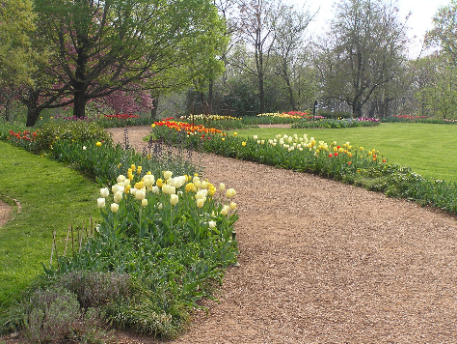
While minister plenipotentiary to France from 1785-89, he observed horticultural matters throughout Europe, beyond his visits to Versailles and Fontainebleau. During a visit to Minister to England John Adams, he visited 16 English county gardens in 13 days. After he returned to America and became President Washington’s Secretary of State, he assisted Washington and L’Enfant in the design of Washington, D.C., with some crediting him with overlaying the perpendicular street grid to facilitate transportation. While in France, he sent various plants and seeds to America in an effort to bolster its agriculture, and conducted exchanges after his return. He tested plants in his Monticello gardens and forwarded some plants to more suitable climates.
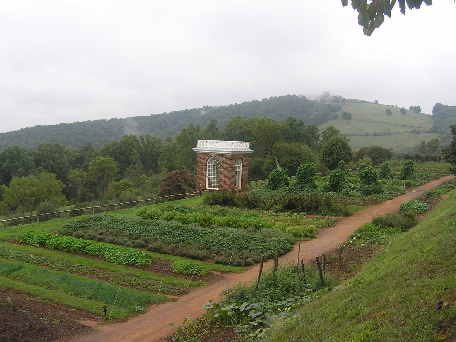
From 1806-12, he constructed Poplar Forest, his home near Lynchburg, often called his “summer retreat.” Because it was a satellite plantation, it is a smaller home with only one shoulder. Beyond the octagons incorporated into Monticello’s design, Poplar Forest is an octagon composed primarily of octagonal rooms—even the nearby privies are octagonal. His writings do not indicate what was planted where, which has hindered restoring the plantings, but advances in garden archaeology have recently provided some guidance.
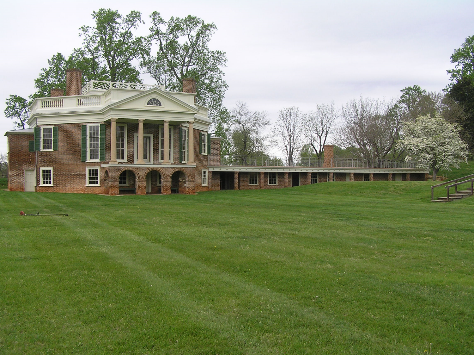

Jefferson designed and oversaw the University of Virginia’s construction from 1814-23. It consists of a central rotunda for the library, with two shoulders connecting to arms extending downhill flanking the top of a ridge. Each arm contained five pavilions in which professors lived and conducted their classes. Each pavilion was designed differently for architectural instruction. Student rooms were between the pavilions. Below these arms, at each base of the ridge, was another row of student rooms separated by three “hotels” in which students would dine and have laundry and other services done. The hotels lined up with the pavilions near the top of the ridge. Each pavilion had a garden behind it running down to the lower row of student rooms, but the pavilions aligned with hotels only had half a garden, with the pavilion having use of the other garden half. There are no records of the original garden plantings, so an eclectic variety of colonial revival gardens have been planted.
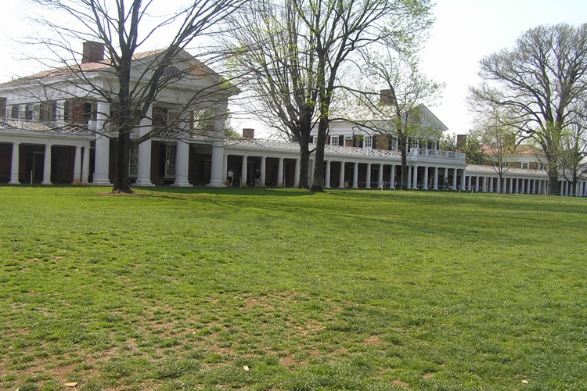
Father of the University of Virginia was among the three accomplishments he directed to be recognized on his grave marker. The other two were author of the Declaration of American Independence and the Statute of Virginia for Religious Freedom. He died on July 4, 1826, fifty years after the Declaration was approved.
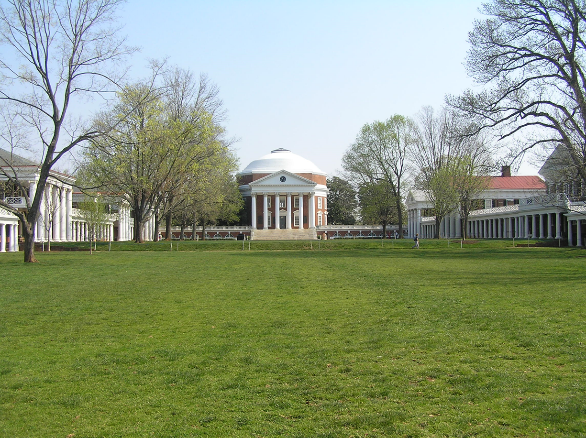
Throughout his life, Jefferson found peace in the garden. As he wrote to Charles Wilson Peale on August 20, 1811, “I have often thought that if heaven had given me choice of my position and calling, it should have been on a rich spot on earth, well watered and near a good market for the production of the garden. No occupation is so delightful to me as the culture of the earth, and no culture comparable to that of the garden. …”
This article is extracted from a Speakers Bureau presentation of OSU Extension’s Master Gardeners of Cuyahoga County Program. For presentations, go to cuyahogamg.org/MGSpeakersBur/MGSpeakersBur.html.


